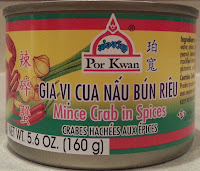Difficulty: Medium
This dish is pure gluttony. Fattiness for the pork belly and the sweetness of gulf shrimp comes together like a well tuned orchestra. Shrimp can be inexpensive if you buy the farm raised ones from Thailand. But due to my conscience, I stopped purchasing the Thai shrimp because of workers' rights issues surrounding the shrimp. I opted to purchase gulf shrimp, which offers a superior taste. It does cost more but I buy the smaller size shrimps and use more pork belly.
1/2 lb pork belly
1/2 lb medium sized shrimp
1-3 cloves of garlic, minced
1-2 shallots, minced
2 tsp organic sugar
2 tsp fish sauce
Salt
Black pepper
Boil some water to scold the skin side of the pork belly. Scrap the skin with the side of you knife. Slice the pork thinly.
With a pair of kitchen scissors, trim the shrimp by removing the pointy part of the tail. Cut off the legs. Cut the back to open it up to take the vein out while keeping the shell on. Pat dry with some paper towels.
Heat up some oil in a pan. You want to make sure that the pan is bigger than the stuff you will cook. A small pan will boil it and the taste would be awful. Saute the garlic and shallots until it gets a little color. Add the pork belly. Fry the pork belly about half way and add the salt and sugar. Allow for the sugar to caramelize. When the pork belly is almost done, add the shrimp. When the shrimp is almost done, add some annato oil and black pepper.
side note: I like my pork belly cooked until the edges is almost crispy and burnt. Cooking it that far allows for the sugar to "candy" the pork. You don't have to allow for it to get that crispy.










